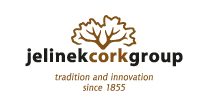Leadership in Energy and Environmental Design (LEED®)
Cork contributes to LEED credits.
Both consumers and corporations have become more aware of their responsibility in protecting the environment in which they live and work. They are taking environmental initiatives ranging from recycling programs to driving fuel efficient vehicles, limiting use of fossil fuels to controlling energy consumption, and preserving green space to ensuring less water, earth, and air pollutants.
Jelinek Cork Group is no exception and continues to promote the use of environmentally friendly, sustainable and renewable products in the building and construction industries. The company fully supports the initiatives of the Leadership in Energy and Environmental Design (LEED) Green Rating System. LEED is an internationally recognized green building certification system, providing third-party verification that a building or community was designed and built using strategies aimed at improving performance across all the metrics that matter most: energy savings, water efficiency, CO2 emissions reduction, improved indoor environmental quality, and stewardship of resources and sensitivity to their impacts.
Developed by the U.S. Green Building Council (USGBC), LEED provides building owners and operators a concise framework for identifying and implementing practical and measurable green building design, construction, operations and maintenance solutions.
LEED is flexible enough to apply to all building types – commercial as well as residential. It works throughout the building lifecycle – design and construction, operations and maintenance, tenant fit out, and significant retrofit. And LEED for Neighbourhood Development extends the benefits of LEED beyond the building footprint into the neighbourhood it serves.
Cork can contribute LEED credits under the Materials & Resources:
During both the construction and operations phases, buildings generate a lot of waste and use a lot of materials and resources. This credit category encourages the selection of sustainably grown, harvested, produced and transported products and materials. It promotes the reduction of waste as well as reuse and recycling, and it takes into account the reduction of waste at a product’s source.
The Green Building Certification Institute (GBCI) assumes administration of LEED certification for all commercial and institutional projects registered under any LEED Rating System.
Jelinek Cork Products and the LEED Rating System
Building products are given points which contribute to the LEED rating of a finished building (exterior or interior). The individual building products are not LEED certified, its the finished structure or interior that is certified.
The following contributing LEED credits are applied when using Jelinek Cork products such as cork underlayment, cork flooring, acoustical cork wall tiles, cork fabrics, and more. The following are the suggested points achievable. It is the responsibility of the customer to apply and register for LEED credits.
MR3 – Resource Reuse – applies with cork underlay which is made from salvaged cork.
MR 4.1: Recycled Content, 10% (post-consumer + ½ pre-consumer)
MR 4.2: Recycled Content, 20% (post-consumer + ½ pre-consumer)
MR 5.1 Locally Manufactured Materials – applies to comfort finish flooring that is colour, finish and adhesive added in Ontario and within a 500 mile radius.
MR 6: Rapidly Renewable Materials
EQ4.1 (1 point): low-Emitting materials – Adhesives and Sealants
EQ 4.4 (1 point): Low-Emitting Materials, Composite Wood & Agrifiber Products
ID Process (1-4 points): Innovation in Design, using the unique natural cellular property of cork in sound transmission reduction (underlayment, wall and floor tiles), thermal insulation, acoustical properties, anti-vibration, expansion joint filler, etc.
Cork is a 100% sustainable and renewable natural resource. Cork bark is harvested from the Quercus Suber tree (cork tree) without damage to the tree and the harvested bark begins to re-grow almost immediately. This harvesting does not harm the tree in anyway and after nine years the trees are ready for bark harvesting once again.
Natural cork bark is initially used in the production of cork stoppers and the “waste” or leftover bark is then ground up and used in the production of composition cork products such as Jelinek’s QuietCork™ underlayment, cork flooring, cork wall coverings, memo boards, and other acoustical and insulating materials. Over 90% of the cork content in Jelinek Cork building products is recycled material either generated from the manufacturing leftovers of industrial cork products or from Jelinek Cork’s own used wine cork recycling program.
Jelinek Cork is committed to developing environmentally sustainable products. Since the founding of the company in 1855 the company’s goal remains the same …. enhance public awareness of cork through delivery of products made in an environmentally friendly and renewable manner. There is no other material, whether man made or natural, with all the characteristics unique to cork: light weight, ability to compress and expand, impermeable, soft, and buoyant.

